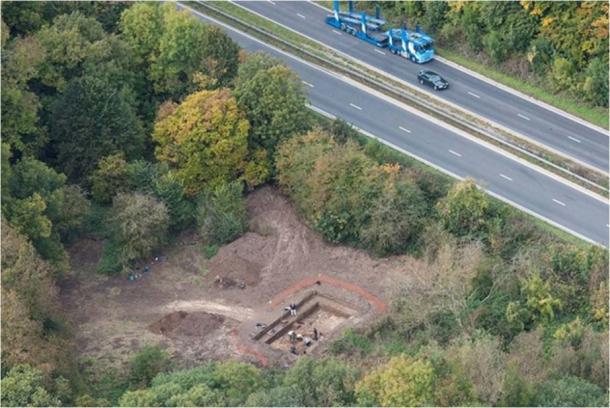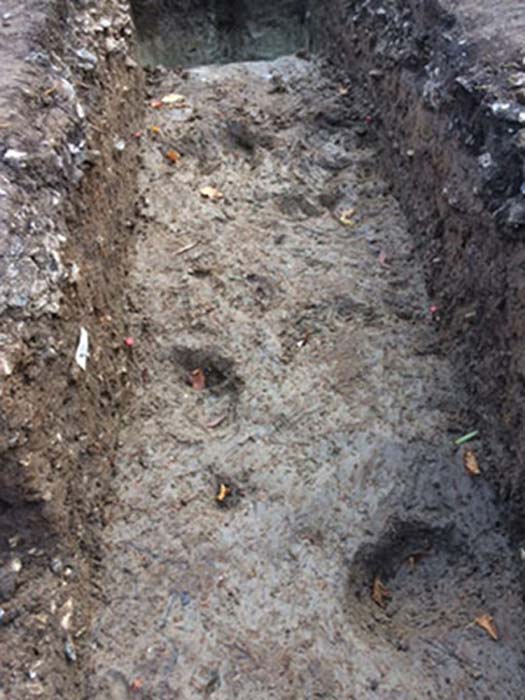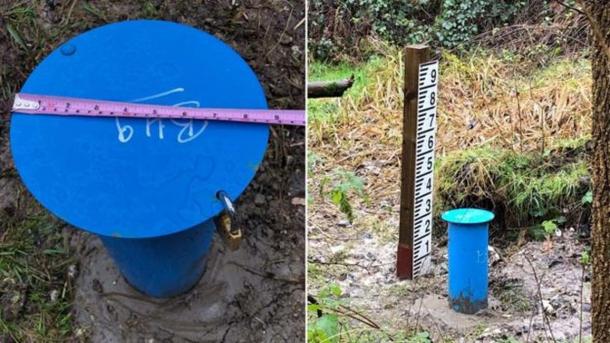
Despite Warnings, Blick Mead, the Possible Cradle of Stonehenge, has been Drilled by Government Contractors
Back in February, Professor David Jacques, an archaeologist and research scholar at the University of Buckingham, challenged the British government over planned improvements to the A303 - a tunnel and a new flyover. Being located so close to the “Blick Mead” archaeological excavations - which are among the oldest in the UK - he declared that these scheduled works “could irrevocably damage the site.” Now his deepest fears have manifested, as the ancient site has been “drilled” by government workers.
A report in a February edition of The Guardian explained that the A303, which passes Stonehenge, runs very near to “6000 year old perfectly preserved hoofprints of wild cattle known as aurochs” which archaeologists found a mile and a half from Stonehenge, the world renowned stone circle located in Wiltshire.

Overlooking the excavations at Blick Mead, just beside the A303. ( Qinetiq – Boscombe Down)
The Blick Mead Archaeological Site
Although nowhere nearly as well-known as Stonehenge, the Blick Mead archaeological site dates back to the end of the Ice Age, around 8,000 BC. Opponents to the government’ s plans to build “eastern and western entrances to the tunnel within the world heritage site and a possible flyover at the Countess roundabout near Amesbury,” have been concerned this year that the works “could harm the rich archaeological landscape” according to the February article in The Guardian.
- Stonehenge and Nearby Stone Circles Were Newcomers to Landscape worked by Ice Age hunters
- Megalithic Examination Explains Why Stonehenge was Built on Salisbury Plain
- Outside the Circle: The Ancient Stonehenge Landscape – A Wider Perspective
Professor Jacques told reporters at The BBC, “This is a travesty. We took great care to excavate this platform and the auroch's hoofprints. If the tunnel goes ahead the water table will drop and all the organic remains will be destroyed. If the remains aren't preserved we may never be able to understand why Stonehenge was built.”
What is more, in February the professor accused the government and Highways England of “negligence or worse, for a map of the plans which he said put Blick Mead in the wrong place.”
Professor Jacques’ biggest concern is that because the aurochs’ prints uncovered during the last excavation were found in a “high state of preservation,” beneath a stone surface, he believes “their conservation was deliberate” and that “human footprints might also be discovered” at the ancient settlement site, which evidence suggests was used especially for feasting. He also believes a “cattle cult” operated on Salisbury Plain some 6,000 years ago and a “30ft long flint surface was built over the prints, which suggested they were “deliberately preserved.”

Blick Mead has perfectly preserved wild cow (auroch) footprints. (University of Buckingham)
Evidence also suggested “hunter-gatherers and the earliest farmers were interacting together and this is “really important for the history of Britain, not just Stonehenge.”
Regardless, Government Workers Have Started Drilling
This week, The Guardian published an update to this story and says “Archaeologists have accused Highways England of accidentally drilling a large hole” at Blick Mead, which has “enraged archaeologists,” who claim the engineers dug “a three-metre-deep hole (10ft) through a man-made platform of flint and animal bone.”

Engineers dug a 3.5 meter deep hole through a 6,000-year-old man-made platform at Blick Mead. (BBC News)
Highways England have said “they are not aware of any damage to archaeological layers on the site caused by their work and will meet with the archaeological team on Thursday, “led by Prof David Jacques” who stressed:
“This is a travesty. We took great care to excavate this platform and the aurochs’ hoofprints. If the tunnel goes ahead the water table will drop and all the organic remains will be destroyed. It may be that there are footprints here which would be the earliest tangible signs of life at Stonehenge.”
- Are There Really Plans to Build a Tunnel Under Stonehenge?
- Stonehenge Builders Had Ancient Knowledge of Pythagorean Geometry
- 5,600-Year-Old Ceremonial Center Found Near Stonehenge, Built 1,000 Years Before Stone Circle was Erected
And the professor is warning of what would be a remarkably sad and essentially anti-cultural affair, for if the remains aren’t preserved appropriately, he believes “we may never be able to understand why Stonehenge was built.” Reacting to such grave warnings, a Highways England spokesperson said: “The works have been undertaken in a highly professional manner, with an archaeologist on site and with due care being exercised at all times.”
Professor Jacques maintains that the whole area should be turned into “a national park and preserved for future generations and studied in perpetuity.” The passionate professor concluded, “It’s supreme arrogance to think we know it all now and it’s a scandal that this is being rushed through.”
Top Image: An ancient springhead at Blick Mead. (University of Buckingham/Lost in the Midlands) Stonehenge. (CC0)
By Ashley Cowie















